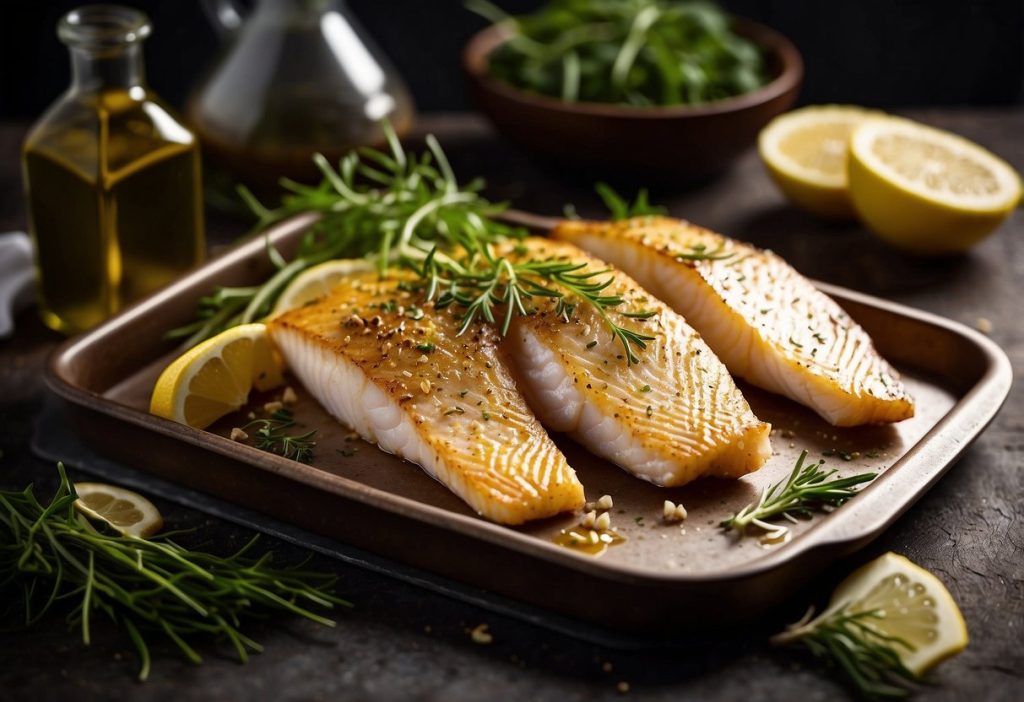Healthy eating gets its most powerful source of food from fish, especially when considering oily fish. Pan-fried, however, in olive oil or griddled with sesame oil, or preserved in a sunflower oil-based can arrangement, offer fish with oil variable aromatic nutritional properties. This blog post will deliver an investigation into the various combinations of fish with oil and different cooking methods, alongside the health advantages of fatty fish and reasons to add more of this food to your nutritional intake.
What is the combination of Fish with Oil?
All oily fish contain naturally high quantities of oil inside their flesh, and this fatty deposit exists within their belly region. Compared to white fish, where healthy fats mainly concentrate in the liver, oily fish distribute these healthy fats throughout their flesh. They provide an exceptional content of omega-3 fatty acids, which support heart, brain, and joint health.
Popular Oily Fish Types are:
Salmon
Mackerel
Sardines
Trout
Herring
Anchovies
Fresh Tuna (Note: canned tuna is often less oily)
These fish are important not just because of their taste but also their nutritional benefits/
Health Benefits of Eating Fish with Oil
1. Rich in Omega-3 Fatty Acids
Polyunsaturated fats called Omega-3s support inflammation reduction and maintenance of cardiovascular health. Regular consumption of oily fish shows a connection to decreased heart disease and stroke risk, as well as lowered depression risk.
2. Brain-Boosting Nutrients
The brain-supporting DHA and EPA components of fish oil may defend against cognitive decline in older adults. Children and pregnant women need omega-3s to help their brains develop properly.
3. Good for Joints
Oily fish consumption assists arthritic individuals and others with joint pain to decrease stiffness and improve together functioning movement over time.
4. Vitamin D and Protein
Fish provides excellent lean protein with vitamin D that supports bones and the immune system, alongside immune functions. Limited sun exposure causes many people to become deficient in vitamin D.
Cooking Fish with Oil
Adding oil during cooking produces superior flavour and texture benefits. The oil type has essential effects on cooking outcomes. Adding healthy oils, such as olive oil, avocado oil, or coconut oil, enhances a dish’s flavour while delivering numerous health advantages.
Common methods of cooking are:
Pan-Frying
Flatfish, tilapia, salmon, and mackerel work perfectly for pan-frying. Use minimal oil to crisp the exterior while sustaining the interior’s juiciness.
Grilling
Before placing the fish on the grill, surface brush it with oil to inhibit sticking and protect moisture retention. Baked whole fish and steak portions of tuna and swordfish work really well.
Baking
A foil parcel containing fish baked with an oil drizzle and lemon slices alongside herbs will deliver a moist and tasty dish. Family meals and large quantity cooking suit these dishes perfectly.
Canning or Preserving
Packaged sardines as well as anchovies and canned tuna often come oil-packed because extended preservation plus superior flavour result.
Direct addition of these foods to salads and pastas, and sandwiches provides fast, protein-dense meal options.
Choosing the Right Oil
If you’re cooking or serving fish with oil, go for heart-healthy options. Here’s a quick guide:
| Oil Type | Best Use | Health Benefits |
| Olive Oil | Grilling, sautéing, dressing | Rich in monounsaturated fats, anti-inflammatory |
| Avocado Oil | High-heat cooking | Contains lutein and healthy fats |
| Coconut Oil | Pan-frying, flavour enhancer | Antimicrobial properties, though higher in saturated fats |
| Sunflower Oil | Canning, general cooking | Mild flavour, contains vitamin E |
Fish with Oil Dish in Various Traditional Cuisines
Oil-based fish are used as main dishes in various traditional recipes worldwide.
Mediterranean diet: Lemon-and-herb Grilled sardines drenched in olive oil
Japanese cuisine: Mackerel (saba) coated with soy sauce and baked with sesame oil touches
South Asian dishes: Coconut oil-spiced fish curry
Western cuisine: Salmon baked with garlic and rosemary and drizzled with olive oil
Each culture brings special variations to fish and oil combinations to develop limitless possibilities for this healthful mixture.
How Regularly Should We Consume Oily Fish?
Medical professionals suggest eating two servings of oily fish every week. When cooked, 140 grams (5 ounces) of fish is enough to make a single serving. Expectant mothers and children need to select low-mercury fish varieties whenever possible, including salmon alongside sardines and trout.
Conclusion
A “Fish with oil” hybrid meal delivers major health advantages through its diverse flavours and flexible preparations. Whether you choose olive oil-grilled salmon or sunflower oil-stored sardines, the possibilities for eating nutritious fish become infinite. Your next dining plans should extend beyond the chicken or beef routine. Some omega-3-rich fish fillets in wholesome oil to create a dish that delivers benefits to both your palate and your body.
FAQs
1. What makes fish “oily”?
Oily fish store their fat inside their flesh rather than their liver, unlike white fish. This stored fat contains significant amounts of omega-3 fatty acids. They are associated with several health benefits.
2. Which fish are considered oily fish?
The common oily fish group comprises salmon, mackerel, sardines, trout, herring, and anchovies. Oily fish are popular because they contain an abundant amount of omega-3s.
3. Is it healthier to eat fish cooked with oil or canned in oil?
Both kinds of dishes remain nutritious when high-quality oils such as olive oil or sunflower oil are used during preparation. Cooking fish with healthy oils produces both taste and nutritional gains, but canned fish in oil serves as an easy-to-prep and nutrient-filled seafood.
4. How often should I eat oily fish for health benefits?
Health experts advise people to eat two servings of oily fish every week to fully enjoy the advantages of omega-3 fatty acids and other nutrients.
5. Can I use any oil to cook fish?
Recommended oils for cooking fish include olive oil, avocado oil, and coconut oil. To obtain maximum health benefits, avoid using heavily processed oils or those that contain trans fats.


